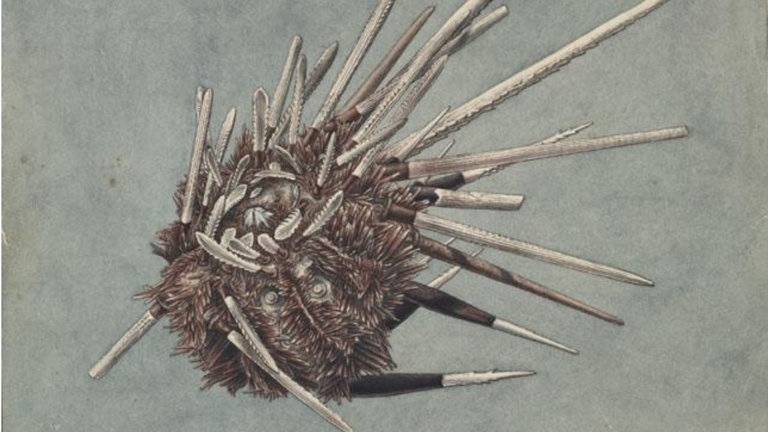
John James Wild
Born Jean Jacques Wild in Zurich, Switzerland in 1824, John James Wild taught languages in Belfast, Ireland, where he met his wife, Elizabeth Ellen Mullin.
Wild was appointed to the position of artist and secretary to the 1872-76 Challenger expedition. This first global investigation of the ocean's depths established the discipline of oceanography as a collaborative and interdisciplinary science.
The most significant contribution by Wild to the many volumes associated with the expedition was Thalassa; an essay on the depth, temperature and currents of the Ocean, for which he was awarded an honorary doctorate from the University of Zurich. He also published an illustrated popular account of his travels, At Anchor, in which he described Melbourne and produced engravings of Port Philip Heads and the Mountain Ash forests.
Despite these impressive accomplishments Wild was curiously unsuccessful in finding a position fitting his extraordinary range of expertise, after emigrating to Melbourne in 1881. Having applied, again without success, for appropriate work in New Zealand, he patched together a living in Melbourne, lecturing in modern languages and literature at Trinity College, working as an examiner in French and German matriculation, and as a secretary and artist.
In the Challenger's floating laboratory, Wild had used dissection and the microscope extensively to describe and illustrate marine specimens. Frederick McCoy clearly saw the potential of this experience to elevate the scientific sophistication in his own publications.
Engaged to create lithographs of both terrestrial and marine animals, Wild's Prodromus pages were carefully planned and tightly conceived. His images are notable for their precision and formal clarity.
Deep appreciation for geometric patterns in nature is obvious in Wild's depiction of the radial symmetrical of animals such as Echinoderms. His portrayals of marine invertebrates were generally more convincing than those of higher forms, especially where he was tempted to place animals in a semi-realistic tableau.
A frugal artist, Wild characteristically drew on both sides of paper and took particular care to fit as much information as possible onto each page, giving many compositions a crowded appearance.

